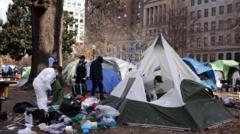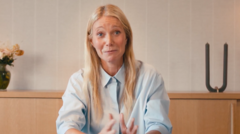As tourist incidents increase, including damage to priceless artworks, museum officials are grappling with the challenge of balancing visitor engagement and preservation.
European Museums Struggle with Selfie Culture: The Uffizi Incident Highlights Growing Concerns

European Museums Struggle with Selfie Culture: The Uffizi Incident Highlights Growing Concerns
A recent incident at Florence's Uffizi Gallery raises alarms over the effects of selfie culture on European museums.
In a troubling incident at Florence's iconic Uffizi Gallery on Saturday, a tourist accidentally damaged a centuries-old painting of Ferdinando de’ Medici while attempting to recreate its pose for a selfie. This mishap adds to a series of frustrating events across Europe where visitors have not only distracted themselves but also harmed priceless art.
The Uffizi’s director, Simone Verde, has expressed growing exasperation over this trend, stating, "The problem of visitors who come to museums to make memes or take selfies for social media is rampant." Just weeks earlier, an incident at the Palazzo Maffei in Verona saw a visitor infamously break a Swarovski crystal-covered chair while posing for photos, highlighting the reckless behavior linked to social media attention-seeking.
Even the Louvre Museum in Paris has recently seen staff protests in response to overcrowding and disruptions caused by selfie-obsessed tourists. These occurrences underscore the mounting concerns among museum professionals regarding the pressures of mass tourism, particularly during high seasons when galleries teem with visitors eager for social media-worthy moments.
Marina Novelli, director of the Sustainable Travel and Tourism Advanced Research Center at Nottingham University, highlighted this growing concern, stating, "This problem, with tourists damaging artwork, is something that is increasingly happening." Museums worldwide are struggling to implement effective strategies to balance the enjoyment of their collections with the need for preservation, as tourists flock to these historic spaces more for personal branding than for cultural appreciation.


















